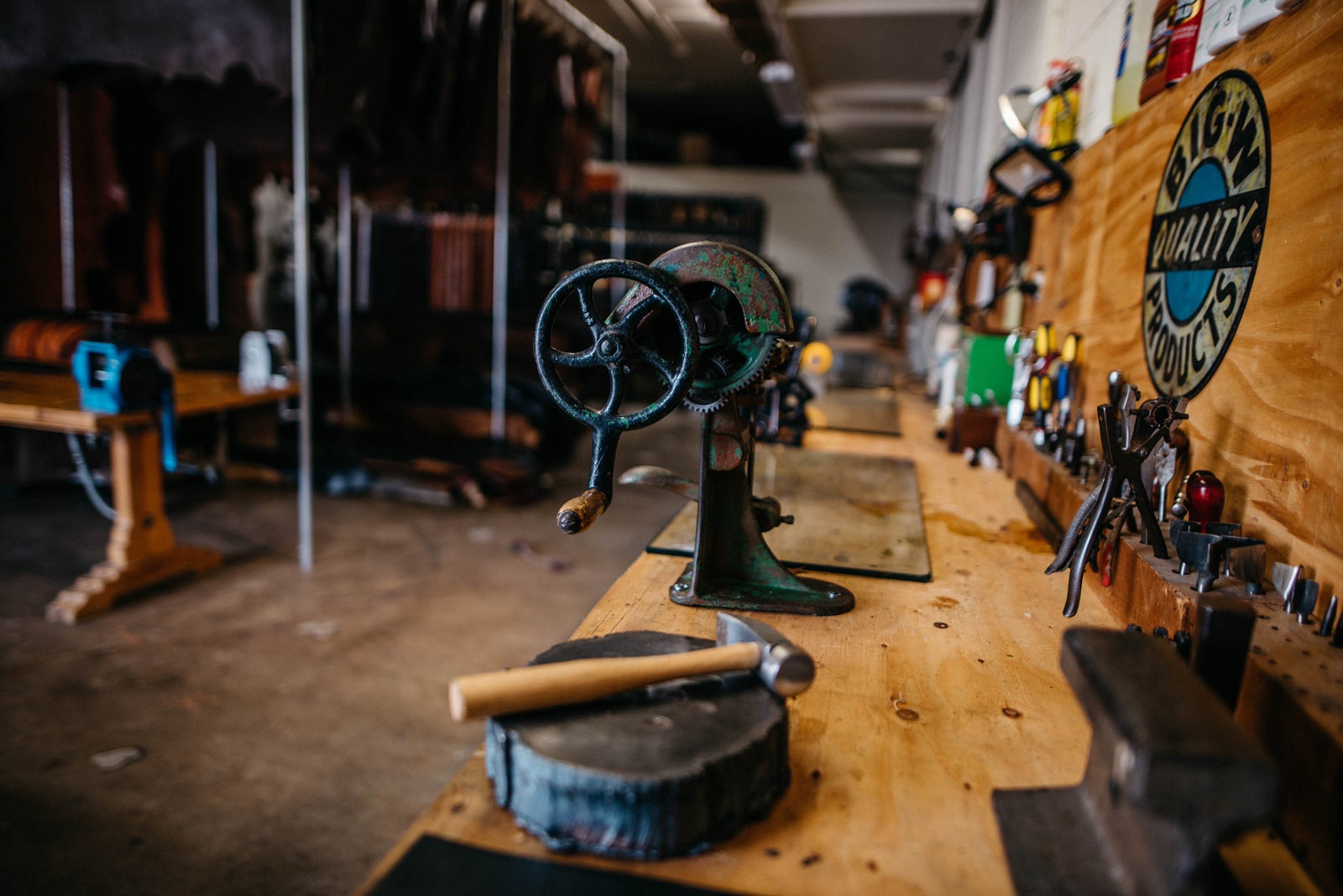21 Step Process
“This 21 step process offers no shortcuts, only the satisfaction in knowing that most companies are not willing to go this expensive and laborious direction.”
Brenda and Manny Brulport
OWNERS SBC
PREPARING THE LEATHER
The key to a great meal is great ingredients...belts are no different.
"For people that know Full Grain leather and Vegetable Tanning.... There is no Substitute."
The bovine hides are separated from the USDA beef at the Texas and Midwest packing houses. The hides are sorted and quality graded right then and there. The largest and nicest are set aside and are usually delivered to 2 vegetable tanneries in the United States, Wickett and Craig® and Hermann Oak®. They are the only two large tanneries still left in the USA making this vegetable tanned natural leather. Both tanneries have been in operation for over 100 years. Vegetable tanning uses clear aniline finishes for beautiful aging, patina, and color depth. That is why you see limited variations of color shades, usually 5 or 6 basic tones. Natural or Vachetta, Chesnut, Medium Browns, Chocolate, Mahogany, Merlot and Black. The vegetable tanneries do not correct imperfections in the grain like shoe leather tanneries. The shoe tanneries ()mostly out of the United States due to negative environmental water impacts) cure leather by means of a much shorter and much different tanning process called chrome tanning. The vegetable tanneries we buy our leather from tan leather in a very different way. What you see in vegetable tanned leather is pretty much a lighter version of what you will get from your belt in 10 years. For those who have a basic understanding of full grain leather vegetable tanning, there is no substitute.
We use this strap cutter just about every week in the shop. It is the first process after hide inspection and blocking take place.

BENCH TOP SKIVER


QUAD-CUT BEVELER
 .
.
CREATING THE HOLES & FINISHING THE EDGES
Many years ago we decided that most belt manufacturers set their holes too far apart. Most are close to an inch...too far away in our opinion. When holes are placed 1 inch apart the belt owner can find him\herself between holes, sometimes for months or years. They might end up drilling a hole through the belt or worse, driving a nail through their belts. This will cause eventual hole cracks and failure.

THE EDGE SEALING PROCESS
We use an imported Italian edge dye specifically formulated for vegetable tanned leather. It is blended with a compound of emollients. This expensive and natural edge coat smooths out the edges without flaking or picking off. We apply it twice and then burnish while the edge finish is still tacky. That ensures a penetration and minimal crusting.
Many leather factories often machine roll coat their belts. Then bake the edge dry with conveyor ovens. We believe this is why many edges on other companies' leather belts and handbags will crack and peel off. The hand burnishing process forces penetration and complete adhesion without a thick and heavy look.
LIQUID SADDLE SOAP and HEAVY CANVAS
"There is no substitute for heavy canvas, saddle soap, and good old fashioned elbow grease."
GUM TRAGACANTH
The Second Edge Process is with gum tragacanth. This is a natural plant based edge smoothing agent.

The Final Edge Process is with an alpha hydroxy product. This lowers the pH and although expensive, offers the best final edge in leatherwork

LOCK STITCHING
"Germany produces the finest industrial sewing machines in the world. Our machine defines stitches with unparalleled quality."
Below is The Autumn in Merlot Bridle. The stitch definition is the signature benchmark of German equipment. The only downside is the slower speed this German workhorse operates at, compared to the mass production models.
Most good things are worth their wait.
BELT LOOPS
"Our loop making process is like a mini belt regarding labor... It's in the SBC details as to WHAT MAKES US DIFFERENT."



Currently, front loops are being sewn closer to the snap on men’s jeans either for fashion or fit. To accommodate for this we have moved the belt keeper loop closer to the buckle. You will grow very fond of this simple feature.
ELECTRIC HIDE BRANDING TOOL

THE FINAL STEP
This electric hide brander brands AZBELT.COM onto every belt.









